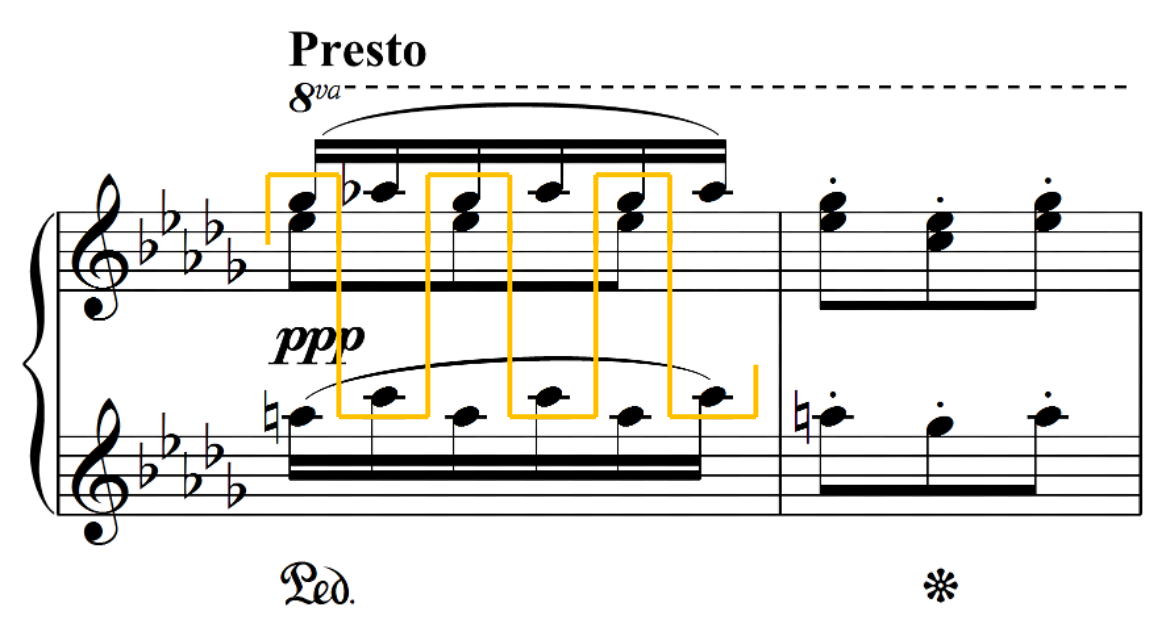SPECIAL COLLECTION | Dorothy Brandwein’s Ravel Fingerings
Published on 5/5/2022 with the author’s permission
First appeared in Dorothy Woster Brandwein, "Divisi Fingering in Selected Passages from Ravel's Solo Piano Works" (DMA diss., University of Missouri–Kansas City, 1981), 51, 121.
50: “Ravel experimented with the effect which is produced when two harmonies are repeated in rapid succession at the softest dynamic level possible. Divisi fingering allows the pianist to easily coordinate the rapid alternation of the two sonorities…”
51: “The same technique may be used for the double-note trill at the end of the ‘Menuet,’ in order to preserve the sounding intervals of a third. If the right hand depresses the final notes of the trill, as marked, the left hand is free to depress silently the bass notes as the pedal clears all vibrations extraneous to the tonic harmony.”



















